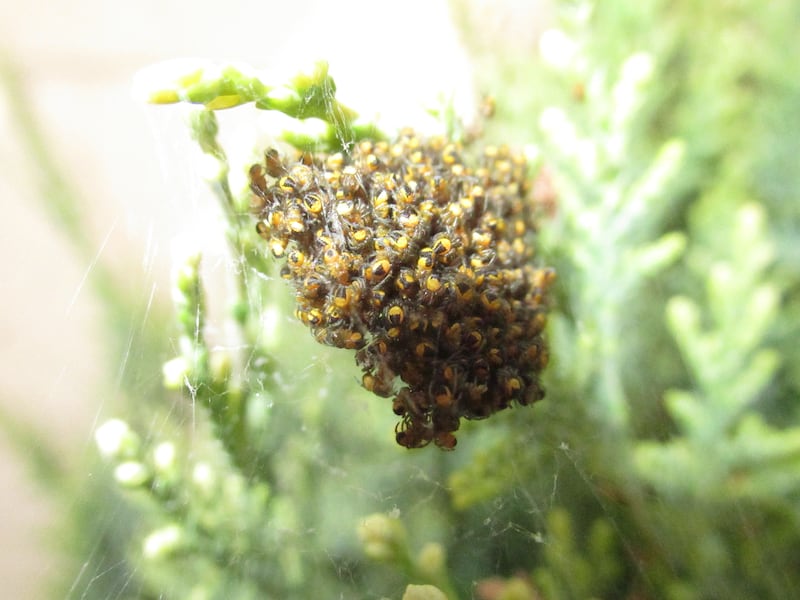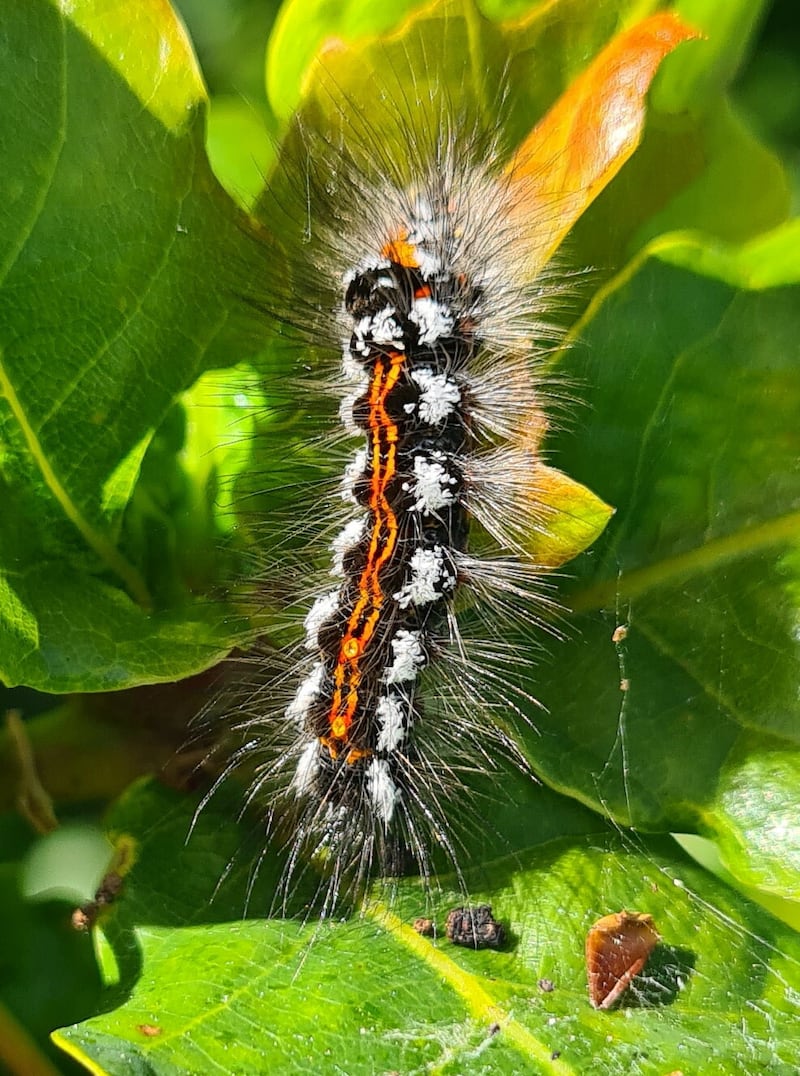This beautiful dragonfly spent an hour or so on the rose. Is it the hairy dragonfly? − Elaine O Malley Co. Limerick
It’s not. It is a female Amber-winged Hawker. These appear by mid-June, so this is a newly emerged one that is going through a maturation phase in the safety of the garden. It will return to the water habitat from whence it came, to seek a mate when fully mature and ready for action. It is one of our more common large dragonflies.

This moth overnighted in the bathroom. Can you tell me what it is? – Catherine Coakley Cork City
Michael O Donnell of MothsIreland confirms my identification of it as a Riband Wave moth, whose brown caterpillars feed on dandelions, docks and ribworts in gardens. MothsIreland maintains the National moth database and welcomes all moth records. The records contribute to the distribution maps of all moth species that occur in Ireland. Records can be submitted, and the maps can be viewed on the MothsIreland website https://www.mothsireland.com/. The MothsIreland Facebook Group is a great resource for help with identification queries.
READ MORE

This sparrowhawk was visiting the bird feeder at my home in Monaghan town. – Michael Brown Co Monaghan.
This is an excellent picture of a male sparrowhawk. This bird of prey species feeds mainly on small birds which it catches by surprise. This was why it was coming to the bird feeder, which it obviously considers to be the local takeaway.

Spotted this black and yellow nest in the back garden. I think the flash from the camera caused a few to break rank! – Michael Fitzsimons Co Dublin.
This is a nest of garden spiderlings. They have just hatched out of their eggs and will quickly disperse, whether or not you appear like the paparazzi. Once she has laid the eggs in the protective cocoon, the mother has nothing further to do with them. Each must now make its own way in the world. As soon as they have hatched and moulted once they are on the move to avoid predators like hungry robins.

We saw this lovely caterpillar on an oak tree, near a lake beside The Murragh, Co Wicklow. What will it be when it emerges? – Eithne Cavanagh Wicklow
It will be a moth – the much less dramatic looking Yellow-tail moth. This caterpillar has overwintered as a tiny caterpillar newly hatched from an egg laid last autumn. Since late spring it has been feasting on the leaves of the oak and perhaps other tree species too and growing rapidly. Its skin doesn’t expand so the now too–fat caterpillar bursts out of it and develops a new hairier skin. It does this four times in all with each instar state, as it is called, characterised by an increasingly hairy and brighter coloured skin that deters would-be predators. This is its final fifth instar state and it will soon stop eating altogether, become a chrysalis and emerge as a white furry adult moth with a yellow tail in late July.

Is this unusual – a white Foxglove which was seen growing in our garden in Wicklow? – Joan & Aubrey Flood
Foxgloves are more usually purple in colour it is true, but white ones do occur from time to time. The garden flowers are the same as the wild woodland ones and they contain several different colour genes. They self-seed from year to year and often enough a white one, or maybe a pale yellow one will occur the following year even though there were only purple ones originally. They are all excellent sources of nectar – particularly for bumblebees.
Please submit your nature query, observation, or photo with a location, via irishtimes.com/eyeonnature











